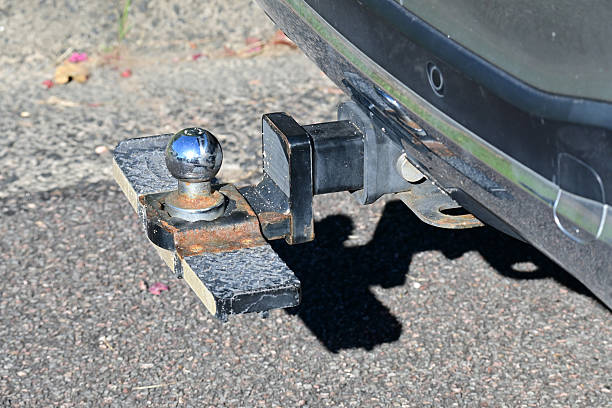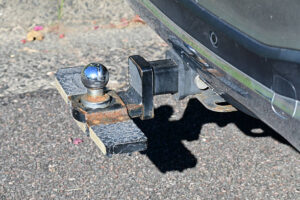How to Install a Rear Hitch on an SUV
Installing a rear hitch on your SUV might appear to open an unending door of possibilities that could be as follows: towing a trailer, attaching a bike rack, and even hauling some extra stuff on a road trip. Training is always cheaper than doing an across-country trip or the desire to wring more utility out of your car.

Through learning, it would be possible to save money and, in the process, become more confident with doing all manner of small- and medium-hauling transactions at the same time. There are the right tools and a close enough way with proper directions to do this job without a mechanic’s involvement. The book is a holistic learning process as expressed by an individual with first-hand experience. You come to know everything you would want to know about fitting a rear hitch safely and efficiently.
The price to fit a rear hitch
Most of the new SUVs are utility-oriented, and a rear hitch will go a long way with utility in them. You do not necessarily need to understand how to install a rear hitch on an SUV unless you are a professional mechanic, but you must have a clear destination. Be it connecting a camper trailer or fitting a cargo carrier to go on vacation with the family, the convenience is most certain. In addition to it, you also have the option to do it yourself to save service charges and at your convenience.
Aids and Material That You Will Need
Have your tools ready before you start to calculate how to install a rear hitch on an SUV, since, always, it is more effective to make the planning and not the tools. The items needed are a torque wrench, socket set, eye and hand protection (i.e., safety glasses and gloves), a jack or ramps, a flashlight, and a friend to help you lift. Make sure your car is parked on flat ground or some even surface and put on the parking brake.
To enhance safety, use wheel chocks at the back of the front wheels. Even most hitch kits will be accompanied by instructions, so do not forget to keep them nearby and read them thoroughly long before you start moving.
Step 1: Become an Expected Customer of Your SUV’s Towing Capability
Before Learning How to Install a Rear Hitch on an SUV Learn the towing capacity of your car. It is usually written in the owner’s manuals or can also be printed on a sticker put in the door frame of aluminum on the driver’s side of the car. Excessive weight when towing may burst the transmission or result in careless driving. You should ensure that the hitch you have bought matches the towing requirements of your SUV. An example is the Class III hitch, which is quite common with mid-size SUVs due to its 5,000-pound towing capacity.
2. Buy Right Rear Hitch
Make sure you buy a special sitting-made hitch to fit your make and model. Universal hitches seem to be convenient; however, they tend to cause more changes, nullify warranties, or turn out to be dangerous. In choosing a straight model, a reputable manufacturer should always be selected”. Read customer reviews, watch videos of its installation, and see if such accessories as bolts and washers are some of the products included in a package.
Step 3: Prepare Undercarriage
The first step of how to install a rear hitch on an SUV is rinsing the underbody of your car. There might be grease, rust, or dirt, so the hitch may not fit properly, or it could be mounted. It is also possible that you may require the removal of any previously installed tow hook or cover panels that are obstructive. When the bolts are hard to loosen, apply rust penetrant spray. Wear a pair of gloves and safety glasses when you practice this step, especially when you are handling power tools.
Step 4: Mount and fit the hitch.
When using a jack, support the hitch to position it, or use another pair of hands. Line up the holes on the hitch with the holes that have been drilled already in the frame of your SUV. Put in and tighten the bolts by hand to see how the alignment is working. Shuttling one side and tightening before checking the line-up is one of the mistakes that people make when calculating how to install a rear hitch on an SUV, and this can lead to a skewed install. Once you are certain that everything is out and in its proper place, tighten the bolts using a torque wrench as per the manufacturer.
Step 5: Confirm and Test the Installation
Once you have torqued all the bolts, check to see what you have done to wiggle the hitch a bit to ensure that it does not move. Make sure that the whole hitch is not touching the exhaust and other objects that may produce a potential rattle and wear effect. They are minor checks, yet when you have learned how to install a rear hitch on an SUV, you cannot dismiss them, as you can afterward find them of use in preventing grave difficulties. Connect the wiring harness supplied as shown, also, except as your hitch has the provision of trailer lights made on the wiring supplied.
Step 6: Test Drive and Checkup
After you have been through the installation process, drive your SUV without anything in the back, and drop in for short visits to listen to strange sounds. So, on rechecking the bolts on it, get on to it on your return, ensuring that nothing has come loose. You read a sign: How to Install a Rear Hitch on an SUV.
Many, with a nod, think that so long as it is bolted, it is all right, but being educated in how to install a rear hitch on an SUV means more than having in mind that it is necessary to do this sort of work. It would also be good to start the practice of checking the bolts every two months, especially when towing heavy loads.
The Benefits of Do-It-Yourself
The time and trouble you spend learning to operate it How to Install a Rear Hitch on an SUV affords you a certain insight into the possibilities of your car. It is freeing, in addition to edifying, to contract out one of the things, such as self-installation. You will not only save money but also get to know more about your SUV and its structure. Today there can be plenty of tutorials and walkthroughs, especially of popular SUV models, and first-time learners are no longer to be left in the dark. And, once you do install one, subsequent installations will become simpler.
Traps to avoid
Errors are even made by people who are well-versed in do-it-yourself. Don’t rush. Recheck the measurements, provide the correct torques, and do not use any aftermarket hitches that are not of the correct fit for your vehicle size. When you are researching how to install a rear hitch on an SUV, you should not cut corners. Proper installation can otherwise lead to major injuries or a fracture of the pieces in your frame. In addition, regarding towing trailers, including the use of brake lights or turn signals, it is also vital to take into consideration wiring.
Conclusion: Easy Upgrade on the Parts of SUV Owners
Lastly, learning how to install a rear hitch on an SUV is a productive and valuable exercise that pays off in the long term. A properly installed hitch will expand the uses of your car, whether you pull a camper carry bikes, or even a cargo carrier. Installation in most cases can be handled by the majority of SUV owners using simple tools, time, and a step-by-step approach. It is an upgrade that does not require any high level of mechanical skill, only the spirit of reading and working a little. And if you have good-quality parts and good-quality techniques, then your SUV will be ready to face any adventure that lies in its path.

FAQs
How long would it take to repair a rear hitch in an SUV?
It takes about 1-2 hours on average, and you need to have simple tools and at least a little knowledge of mechanics. There is also a possibility of taking a little more time by Neweters, particularly when it involves wiring.
Is rear hitch installation something that I should check?
Once you have employed the make-fabricated torque suggestions and a vehicle-specific hitch, it is normally not amplifying to have professional testing. However, to guarantee peace of mind or to haul bulky loads, a snap check by a professional will always prove handy.


